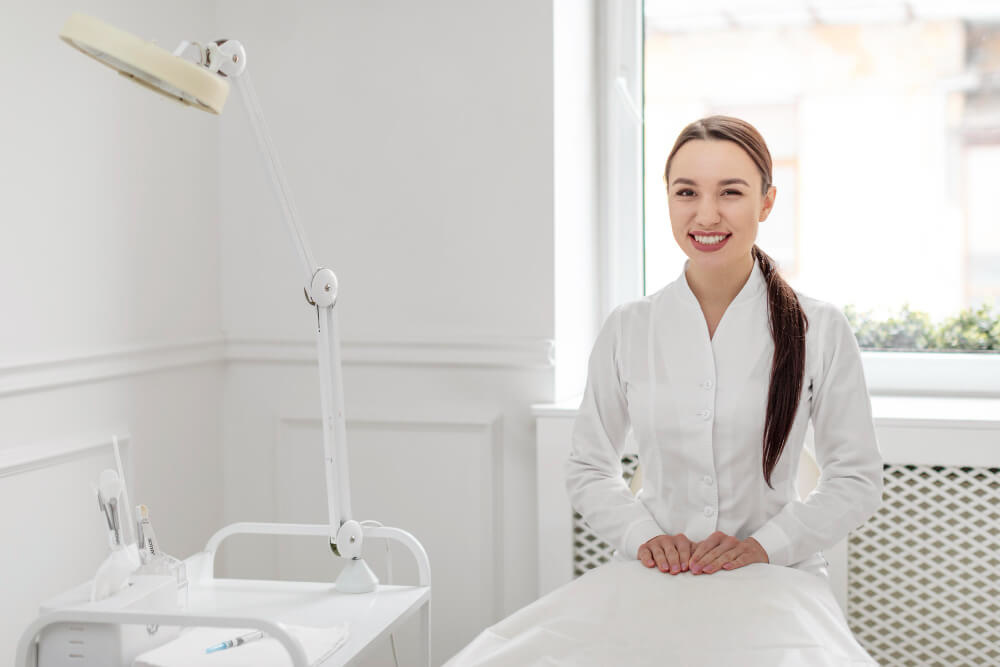Longevity Training: How to Exercise for a Longer, Healthier Life
What if you could train not just for the summer, but for the rest of your life? Imagine a fitness routine designed not only to make you look good but to fundamentally extend the number of healthy, active years you enjoy. This is the core promise of a new paradigm in physical fitness, one that redefines our relationship with exercise as we age.
This approach shifts the focus from short-term aesthetic goals to the long-term objective of enhancing your healthspan, which is the period of life spent in good health, free from chronic diseases and disabilities. It is about adding life to your years, not just years to your life. This strategic method is known as longevity training. It’s a deliberate practice of using exercise to build a body that resists the typical declines associated with aging.
It’s a comprehensive framework for physical exercise that aims to prevent the decline in physical and cognitive function that often accompanies aging. By targeting the key physiological systems that degrade over time, this training helps you build a more resilient body capable of thriving well into your later decades. It is the ultimate form of preventative medicine, accessible to everyone.

What Makes Longevity Training Different from Regular Exercise?
At its heart, longevity training represents a profound mindset shift. Traditional fitness goals often revolve around performance metrics like running a faster mile, lifting a heavier weight, or achieving a certain body composition. While these are valid pursuits, they are not the primary drivers of training for a long, healthy life.
Longevity training, by contrast, is a strategic defense against the common chronic diseases of aging. Experts sometimes refer to these as the ‘four horsemen’: cardiovascular disease, cancer, neurodegenerative disease like Alzheimer’s, and metabolic dysfunction including type 2 diabetes. The goal is to build a physiological fortress that makes you less susceptible to these conditions.
The methodology is structured around improving four key pillars of physical fitness. These are strength, cardiorespiratory fitness, stability, and mobility. Unlike a program that might over-index on one area, like bodybuilding or marathon running, longevity training seeks a balanced development across all four domains. This balance is what creates a truly robust and functional human being, capable of navigating the physical challenges of life at any age.
This approach is less about maximizing one specific attribute and more about optimizing the entire system for resilience. It is a patient, long-term game where consistency trumps intensity, and the ultimate prize is not a trophy but an extra decade of high-quality, independent living.

Why is Strength Training the Cornerstone of a Long Life?
If you were to choose only one form of exercise for longevity, a strong case could be made for strength training. As we age, we naturally experience a decline in muscle mass and strength, a condition known as sarcopenia. This process can begin as early as our 30s and accelerates significantly after 50, leading to frailty, loss of independence, and an increased risk of falls.
Strength training is the single most effective antidote to sarcopenia. But its benefits go far beyond just having bigger muscles. Muscle is your body’s primary metabolic organ. It acts as a large reservoir for glucose, pulling it from the bloodstream to be used as energy. Having more muscle mass improves your insulin sensitivity and dramatically reduces your risk of developing metabolic syndrome and type 2 diabetes.
Furthermore, strong muscles build and maintain strong bones. The mechanical stress of resistance training signals your body to increase bone mineral density, offering powerful protection against osteoporosis. This is particularly critical for preventing fractures, especially hip fractures, which can be a life-altering event for older adults. Your grip strength alone is considered one of the most reliable predictors of all-cause mortality; a stronger grip correlates with a longer life.

How Much Strength Training is Enough?
Consistency is far more important than intensity, especially when you are starting. Aiming for two to four total-body strength training sessions per week is an excellent target for most people. These sessions do not need to be marathon efforts; 45 to 60 minutes of focused work is highly effective.
The focus should be on compound movements. These are exercises that engage multiple muscle groups and joints simultaneously, which translates directly to real-world activities. Think of movements like squats, which mimic getting up from a chair; deadlifts or kettlebell swings, which train you to lift objects safely from the floor; overhead presses for placing things on a high shelf; and rows for pulling things toward you.
Prioritizing proper form is non-negotiable. It is better to lift a lighter weight with perfect technique than to risk injury by lifting with your ego. An injury can set you back for weeks or months, completely derailing your progress. Consider working with a qualified coach to learn the fundamentals before increasing the load.

How Does Cardio Fit into the Longevity Puzzle?
While strength is the foundation, cardiorespiratory fitness is arguably the most powerful lever we can pull for extending lifespan. The key metric here is VO2 max, which is the maximum amount of oxygen your body can utilize during intense exercise. Decades of research have shown that VO2 max is one of the strongest predictors of longevity, even more so than factors like smoking or high blood pressure.
A higher VO2 max means you have a more efficient heart, lungs, and circulatory system. This robust cardiovascular engine is better equipped to handle stress, fight off illness, and deliver oxygen and nutrients to every cell in your body, including your brain. Improving it directly lowers your risk of dying from cardiovascular disease, the number one killer globally.
Longevity-focused cardio training is not just about logging miles aimlessly. It involves a strategic combination of two distinct types of training. The first is low-intensity, steady-state work to build your aerobic base. The second is high-intensity interval training to push the upper limits of your capacity and raise your VO2 max ceiling.

What is Zone 2 Cardio and Why is it So Important?
Zone 2 cardio is the bedrock of aerobic fitness. This refers to a low level of exertion, typically around 60-70% of your maximum heart rate. The easiest way to gauge it without any technology is the ‘talk test’: you should be able to hold a full conversation without gasping for breath. If you can sing, you are going too slow; if you can only get a word or two out, you are going too fast.
The magic of Zone 2 lies in its effect on your mitochondria, the tiny power plants inside your cells. Training at this low intensity for extended periods stimulates mitochondrial biogenesis, meaning your body creates more of them. It also makes your existing mitochondria more efficient at burning fat for fuel. A high volume of Zone 2 training builds a massive, durable aerobic engine.
Activities like brisk walking on an incline, light jogging, cycling, or using an elliptical are perfect for Zone 2. The goal is to accumulate a significant amount of time in this zone each week. Many longevity experts recommend aiming for 150 to 240 minutes per week, broken up into sessions of 45 minutes or longer to see the most benefit.

What About High-Intensity Interval Training (HIIT)?
If Zone 2 builds your base, HIIT raises the roof. This type of training involves short bursts of maximum effort followed by periods of recovery. It is an incredibly potent and time-efficient way to directly improve your VO2 max. While Zone 2 improves mitochondrial efficiency, HIIT improves mitochondrial function and number, pushing your cardiovascular system to its peak capacity.
A classic HIIT protocol might involve getting on a stationary bike and warming up, then going all-out for 3-4 minutes, followed by 3-4 minutes of very slow recovery pedaling. Repeating this cycle four or five times makes for a brutally effective but short workout. Other examples include sprinting up a hill and walking back down or performing intense intervals on a rowing machine.
Because HIIT is so demanding, it should be used sparingly. Overtraining with high-intensity work can lead to burnout, systemic inflammation, and injury. For most people, one to two short HIIT sessions per week is plenty to reap the rewards without the downsides. This is the precision tool you use to sharpen the blade that Zone 2 has forged.

Isn’t Stability Just About Not Falling Over?
Stability is perhaps the most overlooked pillar of longevity training, yet it is profoundly important. Most people think of it simply as balance, or the ability to not fall over. While that is a component, true stability is much more comprehensive. It encompasses core strength, motor control, and proprioception, which is your brain’s awareness of your body’s position in space.
Think of stability as the sophisticated software that controls your strong, powerful hardware. Without good stability, you cannot effectively transfer force, control your movements, or protect your joints from injury. It is the foundation upon which both strength and power are built. A weak core or poor balance will inevitably lead to compensatory movement patterns that cause pain and injury down the line.
As we age, our proprioceptive abilities naturally decline, which is a major reason why the risk of falling increases. Training for stability actively fights this decline. It involves exercises that challenge your balance and force your deep core muscles to engage. This does not just mean standing on one leg; it means learning to control your body through dynamic ranges of motion.
Exercises like single-leg Romanian deadlifts, bird-dog variations, farmer’s walks, and Turkish get-ups are excellent for building this kind of integrated, whole-body stability. Practices like yoga and Tai Chi are also fantastic because they inherently train balance, coordination, and body awareness. A stable body is a safe body, and staying injury-free is paramount for lifelong training.

How Does Exercise Impact Aging at a Cellular Level?
While we can see and feel the macroscopic effects of training, the most profound changes are happening deep within our cells. Exercise is a powerful form of hormesis, a beneficial stress that triggers a cascade of positive adaptations. It sends signals to our DNA to activate genes associated with repair, growth, and resilience.
One of the most exciting areas of research is how exercise affects our mitochondria. As we age, our mitochondria become less numerous and less functional, leading to a cellular energy crisis that underlies many age-related diseases. As we’ve discussed, both Zone 2 and HIIT training are incredibly effective at reversing this trend, essentially making your cells biologically younger.
Studies have also found that certain types of exercise can have powerful anti-aging effects at the cellular level by protecting telomeres. Telomeres are the protective caps at the ends of our chromosomes, and they shorten with each cell division. Shorter telomeres are a hallmark of aging, and exercise appears to slow this shortening process. It also stimulates autophagy, a cellular cleanup process where your cells recycle old, damaged components, making way for new, healthy ones.

What Do Leading Experts Say About Longevity Training?
One of the most influential voices in this field is Dr. Peter Attia, a physician who focuses on the applied science of longevity. He has popularized a powerful mental model for training called the ‘Centenarian Decathlon’. The idea is to first imagine the ten most important physical tasks you want to be able to do for yourself in the last decade of your life, say at age 100.
These might include getting up off the floor unaided, carrying two bags of groceries up a flight of stairs, lifting a child into the air, or hiking on a favorite trail. Once you have your list, the next step is to ‘back-cast’ from that future. What do you need to be able to do at 90, 80, 70, and so on, to ensure you can still perform those tasks at 100? This creates a clear, personalized, and highly motivating roadmap for your training today.
This framework brilliantly illustrates the purpose of longevity training. You are not just exercising; you are specifically training for the physical capabilities that will preserve your quality of life and independence. It requires a balanced approach across all four pillars, and you can see how a detailed Peter Attia’s longevity training plan incorporates strength, various forms of cardio, and stability work to build a body capable of acing that future decathlon.

What are the Official Recommendations for Physical Activity?
While the concepts of longevity training can seem advanced, it’s important to remember that they build upon a well-established foundation of public health guidelines. For those just starting, these guidelines are the perfect entry point. They represent the minimum effective dose of activity needed to see significant health benefits.
The U.S. Centers for Disease Control and Prevention provides clear and concise advice. The official recommendations for physical activity for adults include two key components. First, at least 150 minutes of moderate-intensity aerobic activity, like brisk walking, or 75 minutes of vigorous-intensity aerobic activity, like running, each week. Second, muscle-strengthening activities that involve all major muscle groups on two or more days a week.
Meeting these baseline recommendations is a fantastic achievement that will dramatically lower your risk for numerous chronic diseases. Longevity training takes this foundation and optimizes it. It provides more specific guidance on the types of cardio (Zone 2 and HIIT) and the types of strength work (compound movements) that are most effective for enhancing healthspan, but the core principles are the same. Start with the basics and gradually build from there.

Can Your Genes Influence Your Training Plan?
The principles of longevity training are universal, but the optimal application can be highly individual. The burgeoning field of genomics is beginning to shed light on how our unique genetic makeup can influence our response to exercise and our predispositions to certain health conditions. This is where the future of truly personalized fitness lies.
For example, certain genetic variants might affect how well your body adapts to endurance versus power-based training. Others might indicate a higher inherent risk for soft tissue injuries, suggesting a greater need to focus on controlled movements and extended warm-ups. Understanding these predispositions can help you and your healthcare provider tailor a smarter, safer training plan.
The role of genomics in personalized patient treatment is expanding rapidly beyond disease management and into proactive health optimization. While it is not yet a mainstream tool for every gym-goer, it highlights an important concept: we are all unique. Listening to your body, tracking your progress, and adjusting your plan based on how you feel and perform remains the most important form of personalization available to everyone.

How Can We Measure the Impact of Longevity Training?
To know if your longevity training is working, you need to look beyond the number on the bathroom scale. The goal is to improve your physiological function and reduce your risk of disease, so your metrics should reflect that. Tracking progress in key areas provides motivation and allows you to make informed adjustments to your program.
Key performance indicators for longevity include your estimated VO2 max, which many fitness watches can now approximate. You can also track your resting heart rate; a lower number generally indicates better cardiovascular fitness. For strength, you can monitor your grip strength with a dynamometer or track your performance on key lifts like a deadlift or a loaded carry. For stability, you could time how long you can stand on one leg with your eyes closed.
Beyond physical metrics, it is crucial to monitor key blood markers with your doctor. These include markers of metabolic health like fasting glucose, insulin, and HbA1c, as well as a detailed lipid panel. The clear association between physical activity and health outcomes is well-documented, and tracking these biomarkers provides objective proof that your training is improving your health from the inside out.

How Can Healthcare Professionals Learn More About This Field?
The paradigm shift towards proactive, preventive medicine and longevity is creating a massive demand for well-informed healthcare professionals. Patients are no longer satisfied with just managing sickness; they are actively seeking guidance on how to optimize their health and extend their healthspan. This requires a different kind of medical education.
Clinicians, medics, and health coaches need a deep understanding of exercise physiology, nutritional science, and the molecular biology of aging. They need to be able to interpret advanced biomarkers and use that data to create personalized, evidence-based interventions for their patients. This knowledge base extends far beyond what is taught in most traditional medical schools.
To meet this need, specialized training programs are emerging that provide a comprehensive curriculum for longevity medicine education. These programs equip professionals with the practical tools and scientific knowledge to effectively guide patients on their longevity journey, integrating strategies like targeted exercise protocols, advanced nutrition, and other anti-aging therapies into a cohesive clinical practice.
Longevity training is not about a quest for immortality. It is a rational, science-backed strategy for living a better, more vibrant, and more functional life for as long as possible. It is an investment you make today in the currency of physical activity, which pays dividends in the form of a healthier, more capable future self. By embracing a balanced approach focused on strength, stability, and cardiovascular fitness, you can fundamentally change your aging trajectory. It is never too early, and it is never too late, to start training for the life you want to live decades from now.
Frequently Asked Questions

How does longevity medicine CME differ from training in anti-aging or functional medicine?
Longevity medicine is a distinct, evidence-based field focused on extending healthspan by preventing and reversing age-related diseases through deep scientific analysis. Its CME programs emphasize genomics, biomarker tracking, and data-driven interventions to optimize health before chronic conditions develop. While it shares some principles with functional medicine’s goal of finding root causes, longevity medicine is uniquely proactive and predictive, leveraging advanced diagnostics to delay the aging process itself.
In contrast, the term "anti-aging" can sometimes encompass a broader, less regulated range of aesthetic or commercial treatments, which may not always have rigorous scientific backing. CME courses specifically in longevity medicine are structured to provide clinicians with actionable, scientifically validated protocols for patient care. This ensures the education meets the high standards required for accreditation and is directly applicable within a clinical setting for managing patient health over the long term.

What is the best way to verify that a longevity medicine course is properly accredited for CME credits?
The most reliable method to verify accreditation is to look for an official statement from a recognized body like the Accreditation Council for Continuing Medical Education (ACCME). Legitimate course providers will prominently display this information, often specifying the exact number of AMA PRA Category 1 Credits™ offered. You should be cautious of vague terms such as "CME-eligible" or "CME-compliant," as these do not guarantee official accreditation.
For absolute certainty, you can cross-reference the course provider on the ACCME’s public database or contact the provider directly to request a copy of their accreditation letter. The absence of clear, verifiable accreditation details is a major red flag. Taking a few moments to confirm this information ensures the time and money you invest will result in credits that are recognized by your professional board.

Will the CME credits I earn from a longevity medicine course be accepted by my specific medical board?
In the vast majority of cases, CME credits obtained from a course accredited by the ACCME will be accepted by state medical boards and specialty boards across the United States. The ACCME is the standard-bearer for physician continuing education, so its accreditation carries significant weight and transferability. This broad acceptance makes it a reliable choice for fulfilling most licensing requirements.
However, it is ultimately the physician’s responsibility to confirm the specific requirements of their own licensing board before enrolling in any course. Some boards may have unique rules regarding subject matter or the percentage of credits that can be earned in a particular specialty. A quick visit to your state board’s website or a direct phone call can provide definitive confirmation and ensure the longevity medicine credits you earn will count toward your license renewal.
Discover the most comprehensive functional medicine training, longevity training, and biohacking certification programs designed specifically for healthcare professionals, medics, and clinic owners who want to master regenerative medicine protocols and anti-aging therapies. At Talking Longevity, we deliver cutting-edge education in cellular health optimization, nutritional medicine, hormone balancing, NAD+ therapy, and advanced bio-hack strategies to help you extend patient health span, improve outcomes, and grow your clinic’s revenue. Our globally accessible longevity training courses combine evidence-based science with practical implementation, giving you the tools to stand out in the fast-growing fields of personalized medicine, integrative health, and regenerative longevity medicine. Whether you’re seeking functional medicine certification, biohacking training for medics, or a complete longevity clinic growth strategy, our programs equip you with the skills, credibility, and business systems to lead the future of health.







